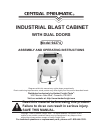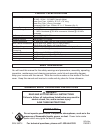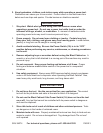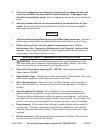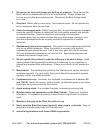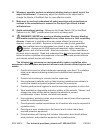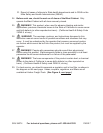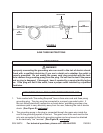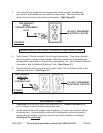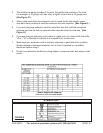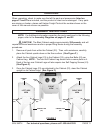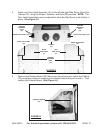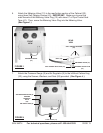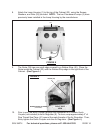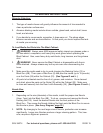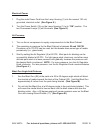
SKU 94274 For technical questions, please call 1-800-444-3353 PAGE 6
Whenever possible, perform an abrasive blasting test on a small area of the 20.
object to be blasted. If necessary, adjust the distance to the object and/or
change the Nozzle of the Blast Gun for more effective results.
Make sure to read and understand all safety warnings and precautions as 21.
outlined in the manufacturer’s manual for the object you intend to blast
with abrasives.
Avoid unintentional starting. 22. Make sure the Power Switch (1A) on the Blast
Cabinet is in its “OFF” position when the tool is not being used.
WARNING! NEVER use 23. sand as a blasting medium. Abrasive blasting
with media containing crystalline silica can cause serious or fatal respiratory
disease. Exposure to crystalline silica may cause silicosis (a serious lung
disease), cancer, and death. Exposure to aluminum oxide (a dust generated
from material removing processes) can result in eye, skin, and breathing
irritation. Always use an ANSI-approved respirator, safety impact eye
glasses, and a full face shield. Avoid skin exposure. Proper ventilation in
the work area is required. Read and understand the ten recommended measures
below to reduce crystalline silica exposure in the workplace and prevent silicosis
and silicosis related injuries and deaths.
The following ten measures are recommended to reduce crystalline silica
exposures in the workplace and prevent silicosis and silicosis related injuries and
deaths:
Prohibit silica sand (or other substances containing more than 1% crystalline 1.
silica) as an abrasive blasting material and substitute less hazardous
materials.
Conduct air monitoring to measure worker exposures.2.
Use containment methods such as blast-cleaning machines and cabinets to 3.
control the hazard and protect adjacent workers from exposure.
Practice good personal hygiene to avoid unnecessary exposure to silica dust.4.
Wear washable or disposable protective clothes at the worksite. Shower, and 5.
change into clean clothes before leaving the worksite to prevent
contamination of cars, homes, and other work areas.
Use respiratory protection when source controls cannot keep silica exposures 6.
below the recommended levels.
Provide periodic medical examinations for all workers who may be exposed to 7.
crystalline silica.
Post signs to warn workers about the hazard and to inform them about 8.
required protective equipment.
Provide workers with training that includes information about health effects, 9.
work practices, and protective equipment for crystalline silica.



